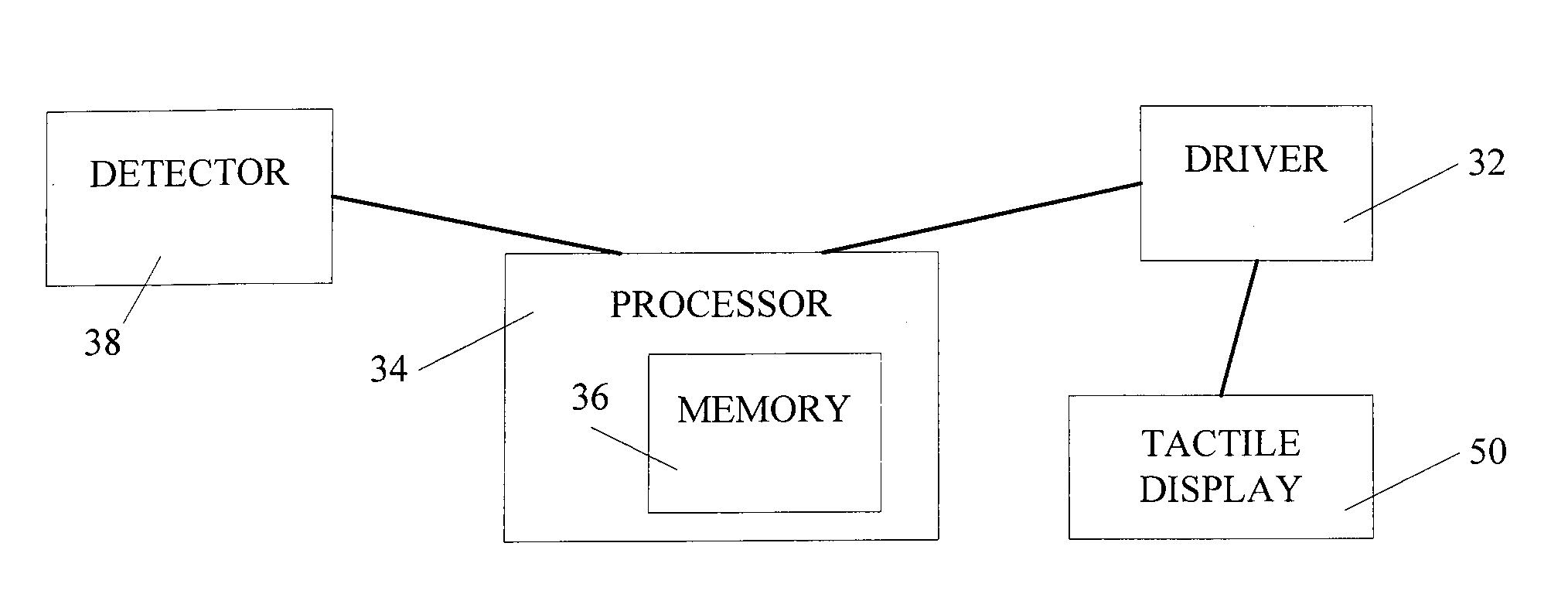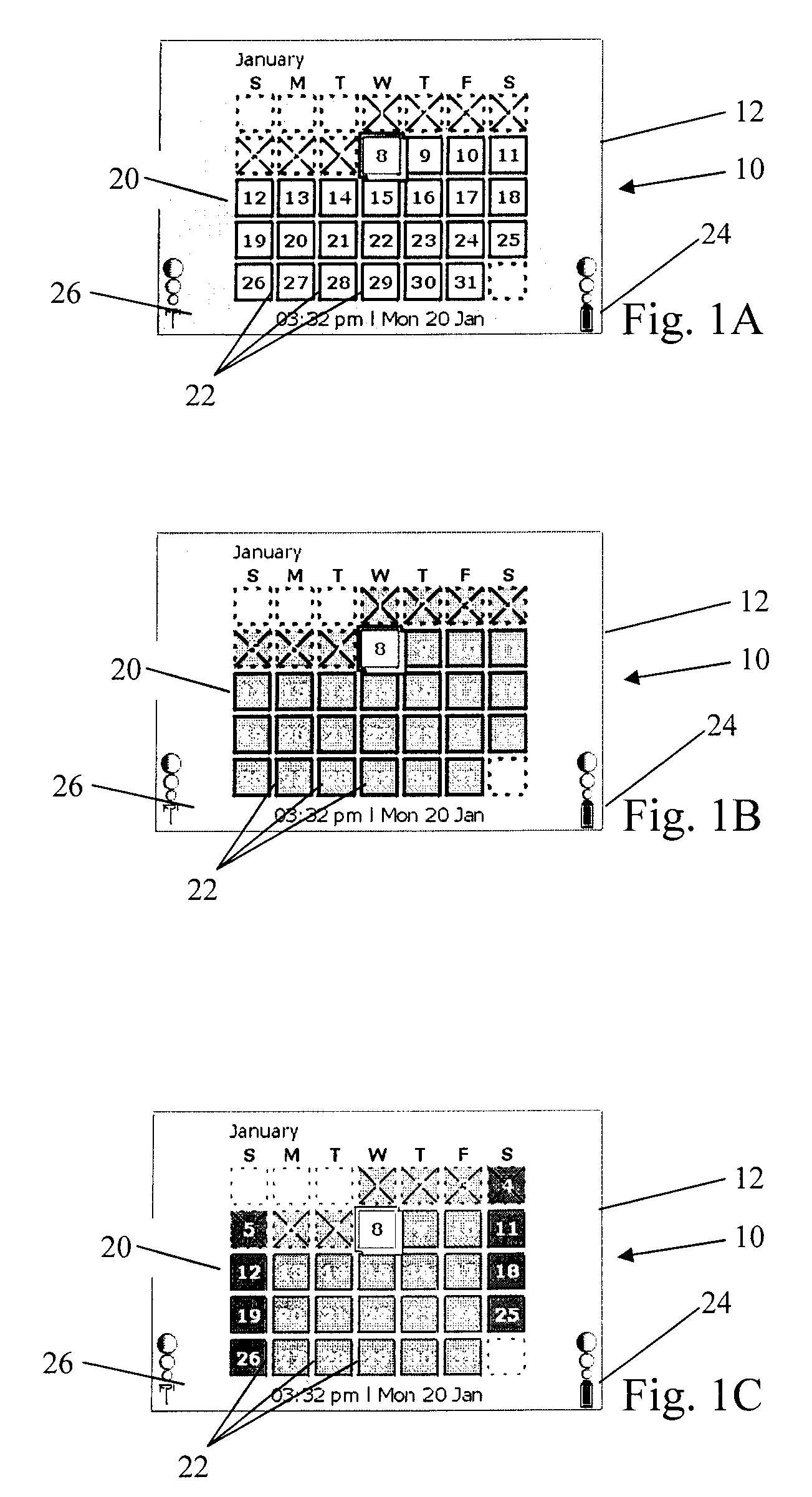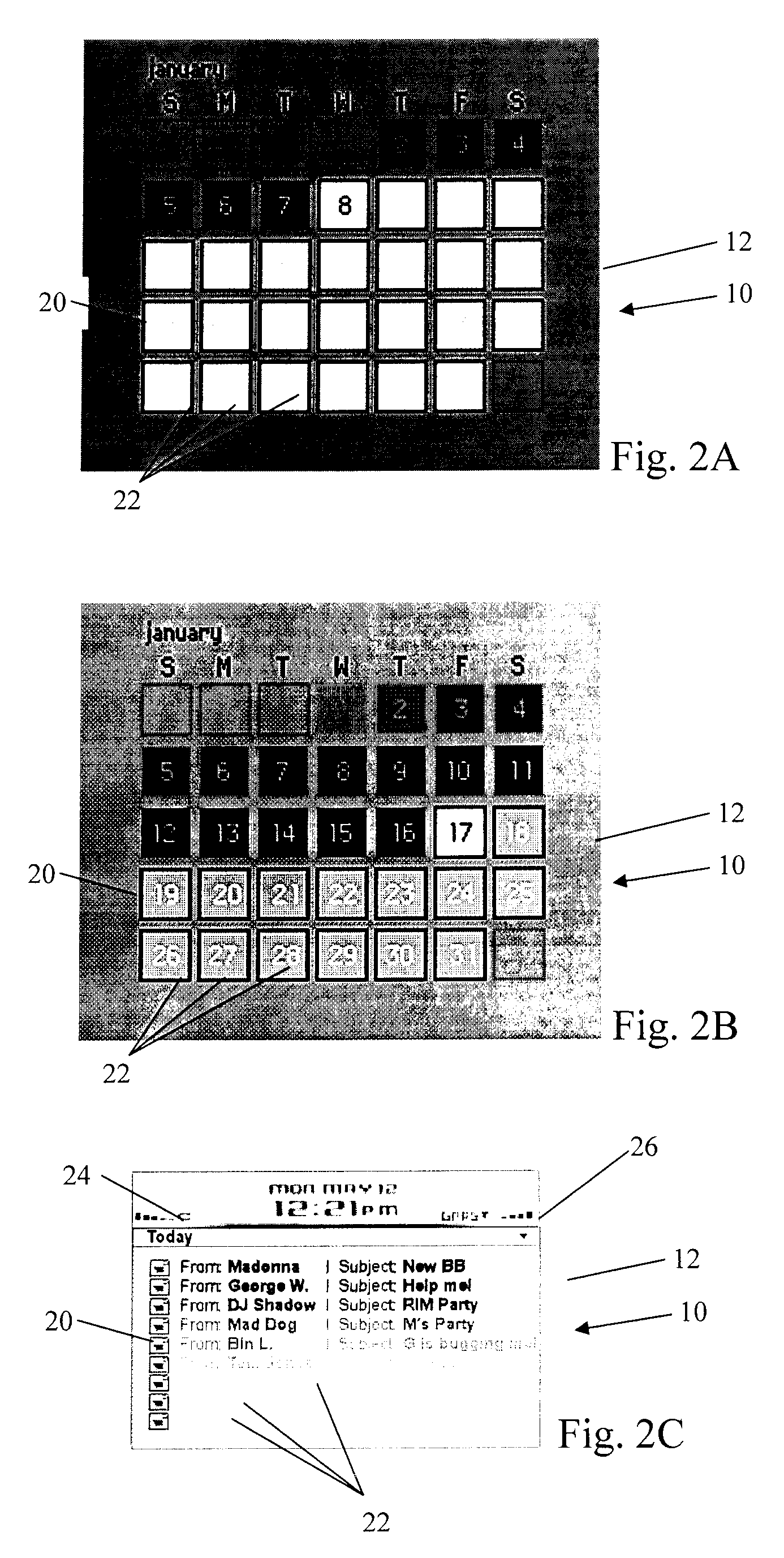Method and apparatus for dynamically varying one or more properties of a display element in response to variation in an associated characteristic
a technology of dynamic variation and display elements, applied in the field of user interfaces, can solve problems such as overwhelming the amount of information imparted to users
- Summary
- Abstract
- Description
- Claims
- Application Information
AI Technical Summary
Benefits of technology
Problems solved by technology
Method used
Image
Examples
example 1
ED VISUAL INDICATION: COLOUR HUE ASSOCIATED WITH BATTERY LEVEL
[0051]In this example, the colours of a battery charge level meter icon change in relation to the level. At all times, the colours of the icon's pixels all have the same or nearly the same hue (or chrominance). That hue is green at a battery level at 100%, red at 10% or lower, and somewhere “between” green and red when the battery level is between 100% and 10%. The continuous progression of hues may follow the cycle of hues associated with an additive colour wheel (red, yellow, green, cyan, blue, magenta) or may follow the cycle of hues associated with a subtractive colour wheel (red, orange, yellow, green, blue, purple). The progression most common in the user's past experience with warnings is likely to be from green to yellow to orange to red.
example 2
D VISUAL INDICATION: OPACITY ASSOCIATED WITH TEMPORAL PROXIMITY
[0052]In this example, an appointment list is rendered on the screen as pixels of various colours. The colours for each appointment change in relation to the appointment's distance in time from the present. Each pixel for a particular appointment has a base colour, which is displayed when the appointment's time is the current time. At a fixed time in the past and in the future, all pixels of said appointment become a specific target colour (possibly one target colour for the past and another for the future).
[0053]In between the current time and one of the threshold times, each pixel is a mixture of X % base colour and (100−X)% target colour; the mixture is obtained by adding the percentages of the respective RGB components of the two colours. If the target colour always appears in an area surrounding the rendering of the appointment, then pixels of that rendering may be perceived as fading into the target-coloured backgr...
example 3
ED VISUAL INDICATION: COLOUR SATURATION ASSOCIATED WITH GPRS SIGNAL STRENGTH LEVEL
[0055]In this example, the colours of a GPRS signal strength level meter icon change in relation to the level. At maximum GPRS signal strength, each pixel of the icon has a base colour which is fully saturated, meaning that at least one of its three RGB components is nil. When no signal is present, the pixel colour is fully desaturated (“decolourized”), meaning that the three RGB components are equal, making the pixel a target shade of grey. The target shade of grey has the same “lightness” or perceived brightness as the base colour, as measured by any of the standard measures of brightness or luminance; the same such measure is applied to all pixels, so that the decolourized (no-signal) icon is recognizable as a black-and-white version (more properly called a grey-tone version) of the fully saturated (maximum-strength) icon. In between maximum strength and no signal, the colour of each pixel is a mixt...
PUM
 Login to View More
Login to View More Abstract
Description
Claims
Application Information
 Login to View More
Login to View More - R&D
- Intellectual Property
- Life Sciences
- Materials
- Tech Scout
- Unparalleled Data Quality
- Higher Quality Content
- 60% Fewer Hallucinations
Browse by: Latest US Patents, China's latest patents, Technical Efficacy Thesaurus, Application Domain, Technology Topic, Popular Technical Reports.
© 2025 PatSnap. All rights reserved.Legal|Privacy policy|Modern Slavery Act Transparency Statement|Sitemap|About US| Contact US: help@patsnap.com



